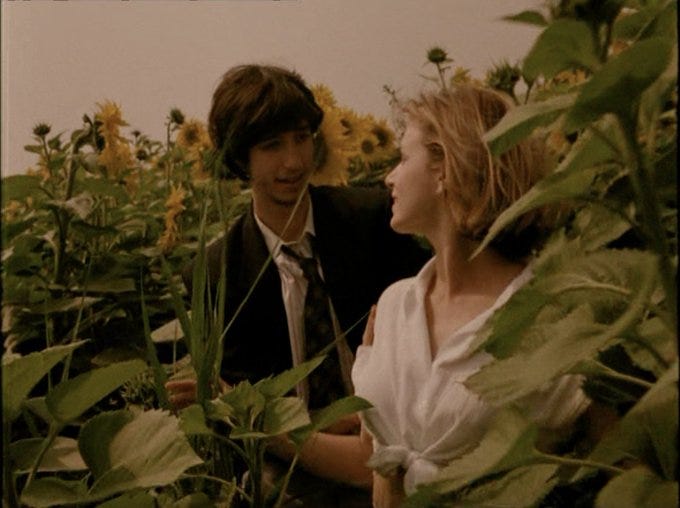The Last Dive (Joao Cesar Monteiro, 1992)
Many films about facing death either veer towards the humanist or the despairing. Even the best ones, such as Taste of Cherry, balance poetry with a air of thick existentialism. Joao Cesar Monteiro’s The Last Dive is notable for initially incorporating the dynamic extremes of life within an open, naturalist context before descending into sonorant lyricism. The film opens in a vein reminiscent of White Nights, with an older man, Eloi, talking a younger man, Samuel, out of jumping into the ocean. Turns out both men are ready to end their lives, but Eloi, determined to save Samuel, takes him on a two night odyssey of Lisbon’s nightlife.
Mostly dialogue-free, The Last Dive’s nocturnal tour is a hangout/dance movie, one that perfectly captures the intimacy and possibility of the night. Within a very French, naturalist style, the film’s sensuality is so heightened that it accommodates both Eloi’s politically-charged depressive spiral (I wish I knew more about Portuguese history!) and Samuel’s initiation into the pleasures that make life worth living. Since this is a Monteiro film, there’s a debauched, self-critical sensibility. Eloi introduces Samuel to his daughter Esperança, a sex worker at the club where they start their night. Eloi’s vaguely proprietary, vaguely incestuous relationship with his daughter, which doubles the budding romance between Esperança and Samuel, is one of the few explicit comparisons that informs the two men’s disparate life trajectories. Monteiro’s dance sequences are primarily shot in an intuitive handheld, savoring the improvised behavior of the background characters (a full woodwind performance!) and the thrills of music, lights, motion, and bodies. Any schematic, fantastical qualities of the premise are subsumed by the force of The Last Dive’s formal clarity. At the end of the night, Samuel and Esperança’s connection transcends the transactional in an extended two-shot of the couple silently flirting to the camera.
On night two, Monteiro confronts reality’s inability to articulate the characters’ elastic emotional states. Operating in the realm of the spiritual, most of the latter half is occupied by an interpretative dance where one by one, two women perform Salomé’s dance of the seven veils, the first rendition set to Strauss’ musical adaptation and the second in complete silence. The dance’s mixture of tragedy and beauty, which takes on an entirely different register once the sound cuts out, sustains the film to its thrumming conclusion. When Monteiro returns to Samuel, Eloi, and Esperança, he abstracts space and loosens scene-to-scene relations. It’s an incantatory approach that presses against the subconscious. The standout sequence tracks Samuel and Esperança swimming through a sea of sunflowers, holding hands as their bodies fade in and out of legibility. In their physical exertion and mutual devotion is Monteiro’s affirmative, Sisyphean view of humanity.





